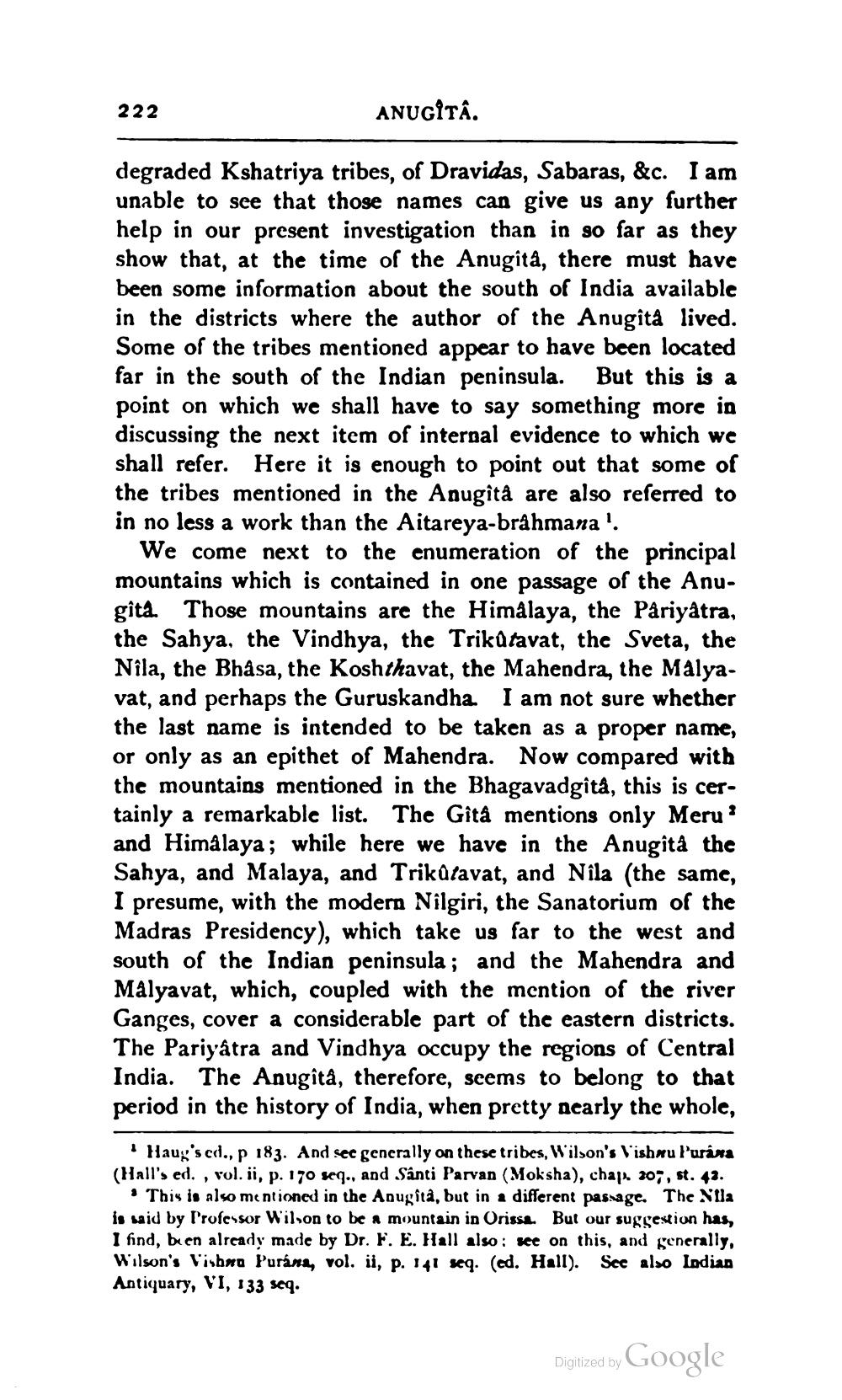________________
222
ANUGËTA.
degraded Kshatriya tribes, of Dravidas, Sabaras, &c. I am unable to see that those names can give us any further help in our present investigation than in so far as they show that, at the time of the Anugita, there must have been some information about the south of India available in the districts where the author of the Anugità lived. Some of the tribes mentioned appear to have been located far in the south of the Indian peninsula. But this is a point on which we shall have to say something more in discussing the next item of internal evidence to which we shall refer. Here it is enough to point out that some of the tribes mentioned in the Anugità are also referred to in no less a work than the Aitareya-brahmana!
We come next to the enumeration of the principal mountains which is contained in one passage of the Anugita. Those mountains are the Himalaya, the Pâriyâtra, the Sahya, the Vindhya, the Trikatavat, thc Sveta, the Nila, the Bhasa, the Koshthavat, the Mahendra, the Malyavat, and perhaps the Guruskandha I am not sure whether the last name is intended to be taken as a proper name, or only as an epithet of Mahendra. Now compared with the mountains mentioned in the Bhagavadgitå, this is certainly a remarkable list. The Gità mentions only Meru' and Himalaya; while here we have in the Anugitå the Sahya, and Malaya, and Trikutavat, and Nila (the same, I presume, with the modern Nilgiri, the Sanatorium of the Madras Presidency), which take us far to the west and south of the Indian peninsula; and the Mahendra and Malyavat, which, coupled with the mention of the river Ganges, cover a considerable part of the eastern districts. The Pariyatra and Vindhya occupy the regions of Central India. The Anugîtå, therefore, seems to belong to that period in the history of India, when pretty nearly the whole,
Hauy's cd., p 183. And sec generally on these tribes, Wilson's Vishnu l'urina (Hall's ed, , vol.ii, p. 170 seq., and Santi Parvan (Moksha), chap. 307, st. 43.
• This is also mentioned in the Aougita, but in a different passage. The fa is said by I'rofessor Wilson to be a mountain in Orisse. But our suggestion has, I find, bien already made by Dr. F. E. Hall also: see on this, and generally, Wilson's Vishna Puráns, vol. ii, p. 141 seq. (ed. Hall). See also Lodian Antiquary, VI, 133 seq.
Digitized by Google




